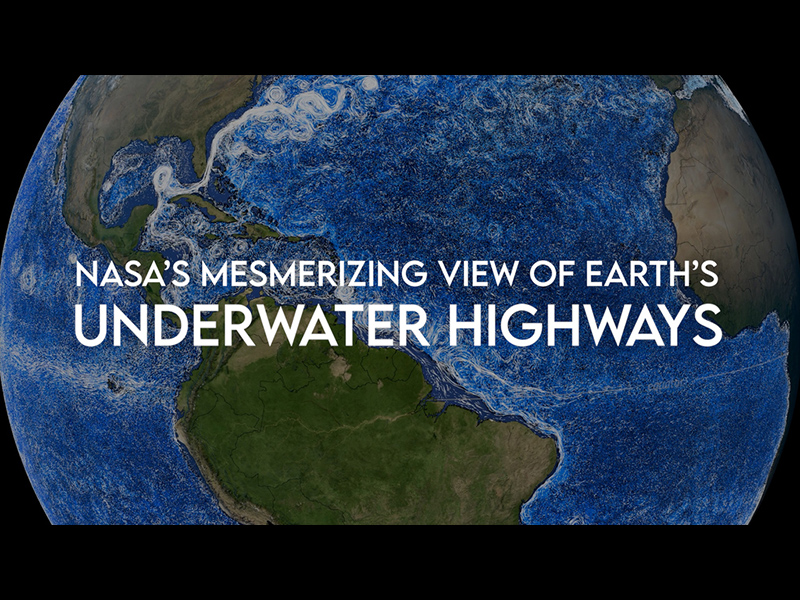Gallery
NASA’s Mesmerizing View of Earth’s Underwater Highways
[28-Feb-2025]This is a visualization of ocean currents around the world. NASA’s ocean model, Estimating the Circulation and Climate of the Ocean (ECCO), is used to visualize the currents. The ECCO ocean circulation model incorporates observations from spacecraft, buoys, and other in situ measurements to keep the model accurate. ECCO is a joint project between NASA/JPL, MIT, and UT Austin. The model output used here is from ECCO-2 and covers the years 2021-2023.
The visualization starts from a global rotating view before slowing down to see the Western Boundary Current along the western edge of the Pacific Ocean along the coasts of Australia, and Asia. We zoom in to show the Kuroshio Current off the coast of Japan. Along the Japanese coast, the current exhibits large meanders that can persist for many months in more or less the same location. The Kuroshio current has a temperature range of 20 to 25 °C. Its salinity can change seasonally with an average value of 34.5.
We then zoom out and move over the Indian Ocean The Indian Ocean exhibits large variations in salinity. The western Indian Ocean is quite salty (>36) due to overflow inputs from marginal Seas (e.g. Persian Gulf and Red Sea). The East Indian Ocean is fresher (~35) due to river inputs from India. The Indonesian Throughflow is quite fresh (33-34) and carries freshwater from the Pacific. We then zoom into the southern tip of Africa. The exchange of water from the Indian Ocean to the South Atlantic occurs here. The Agulhas Current is another Western Boundary current following the slope of the continental shelf closely. The continental shelf along the east coast of southern Africa is quite narrow and steep. This sloping topography stabilizes the Agulhas Current so that it shows no wide meanderings of the type familiar in other boundary currents such as the Kuroshio. The Agulhas Current overshoots the African continent, moving into the South Atlantic. Then retroflects back to the Indian Ocean. At the retroflection, shedding of warm (20 to 25 °C) and salty (~35.5) rings happens. The eddies detached from the current have a lifetime of more than 2 years traveling across the south Atlantic ocean. These eddies are referred to as Agulhas Rings.
Another Western Boundary Current, called the Gulf Stream comes into view along the east coast of North America. The Gulf Stream forms at the Florida Straits. It’s one of the fastest currents on Earth with surface speed of up to 2.5 meters per second. In the Gulf stream, cold cores (mostly anticyclonic ones) form when the Gulf Stream meanders eastward leaving the coast of North America (off Cape Hatteras in North Carolina). The eddy diameters can be as large as 1000 km. Zooming into the Gulf Stream, we can see that the warm surface water (>25°C) moves poleward (white particle trails). The Gulf Stream is generally the warmest and saltiest western boundary current. There’s a return current underneath at depth below 500m (the blue particle trails) moving southward carrying cold waters from the pole.
The loop currents in the Gulf of Mexico are very large eddies persisting in the Gulf. They bring the warm and highly saline Caribbean water into the Gulf. As we zoom out from the Gulf Stream, the salinity version shows that the Atlantic is generally much more salty than the Pacific.
Models like ECCO-2 help scientists to understand the characteristics of these currents better and ultimately understand how heat is transported globally in the Ocean.
View the video and read the transcript at NASA SVS.
Original Media »

